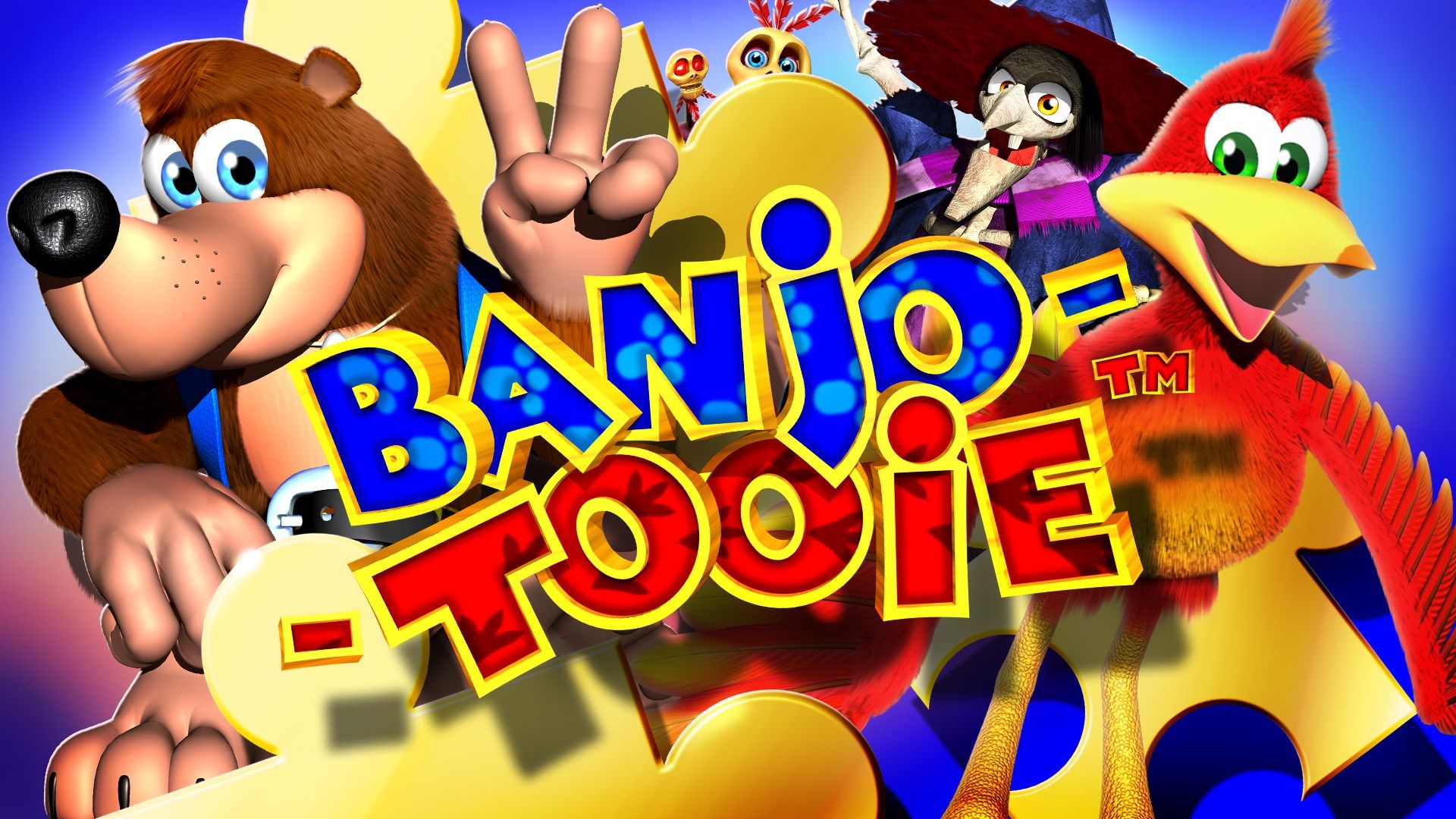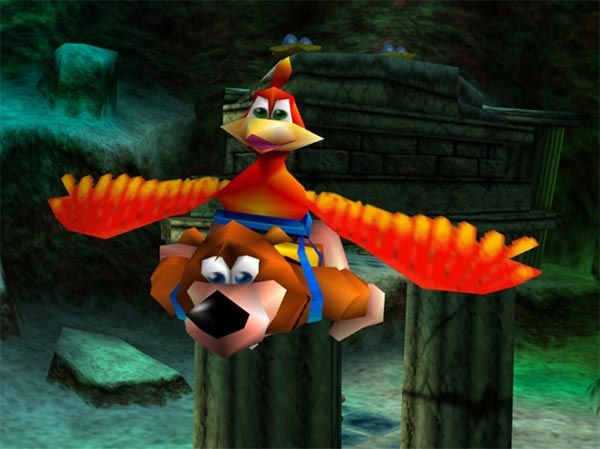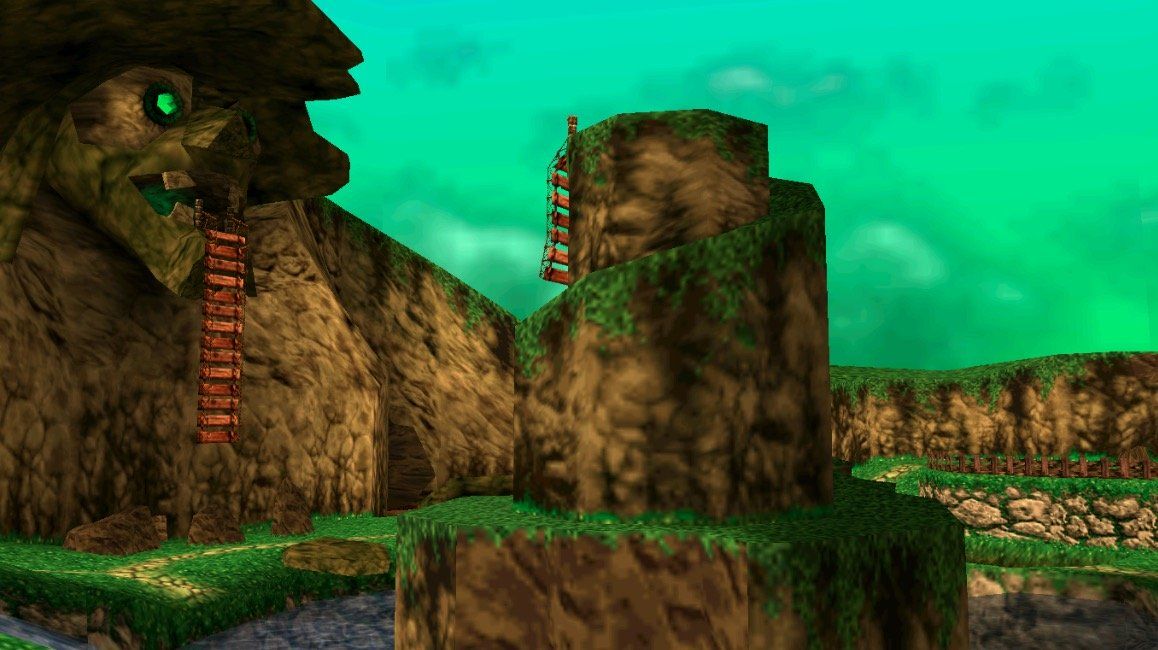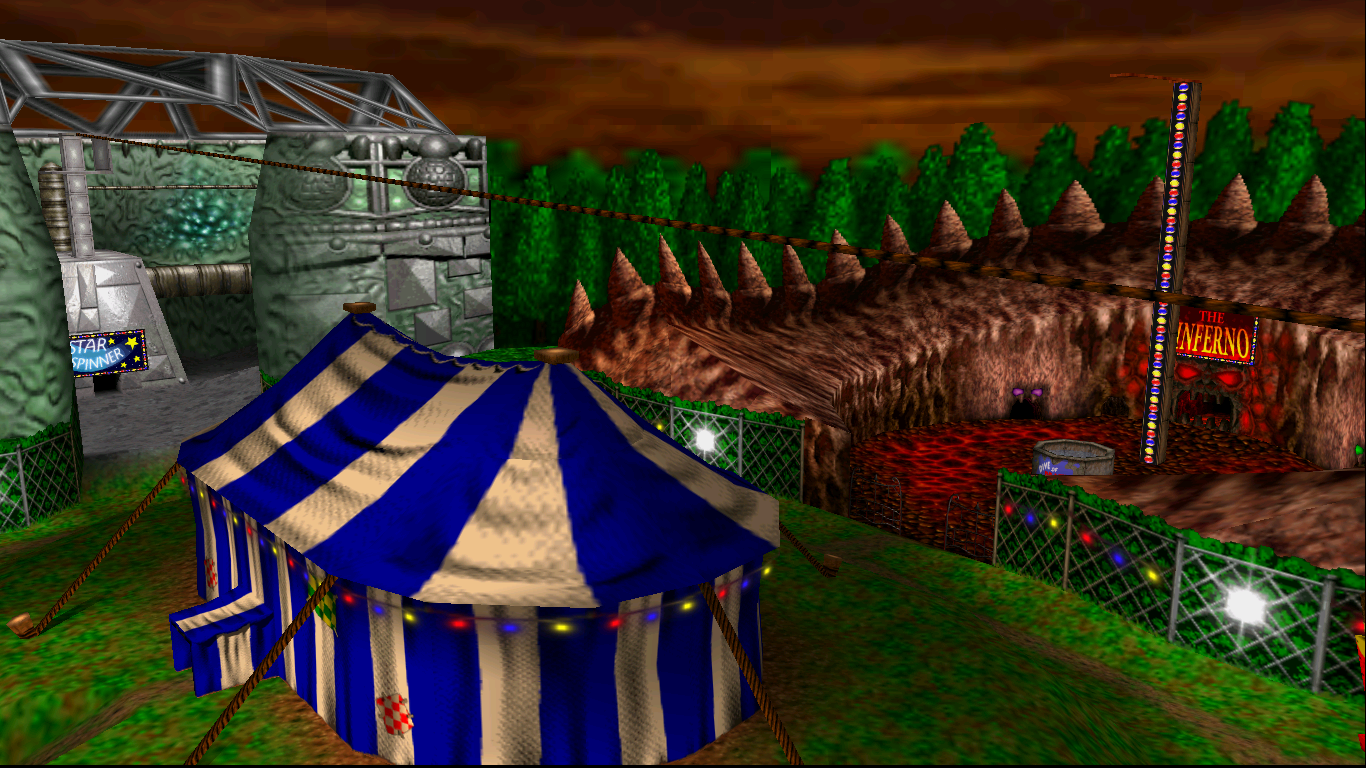Ah, the sequel. It is inevitable nowadays that any successful product will eventually get a sequel. Video games, movies; hell, even the Big Mac got a sequel. Technically a prequel too with the Junior Mac. It is just something that is unavoidable. Studios want the dream of something like a Star Wars or Lord of the Rings; something that can be expanded upon and fleshed out into expanded universes like Marvel, but more importantly, to bring in fat stacks of cash.
Now I know that intro was pretty doom and gloom. Yes, there are plenty of products out there whose soul purpose is just to bring in revenue. Some games I imagine are just magically put together in a gaming blender and creates gaming juice for whatever is popular at the time. Yet plenty of video games have continuously gotten better as the series/franchise continued on. Many times, developers take what worked from their first title and expand on it while tossing aside aspects that didn’t. Uncharted 2, Mass Effect 2, and Super Mario Galaxy 2 all have been heralded as not only some of the best sequels ever, but some of the greatest games ever. These are perfect examples of taking a great foundation and then constructing something marvelous the next go around.
So, tell me. What the hell happened with Banjo-Tooie? How does Rare create something so perfect the first time only to create something so…not Banjo-Kazooie the second time? I mean yes, the game features the same bear and bird showcasing that wittiness we so loved back in 1998. Yet, why is this one not so fondly looked back upon? How could Rare, one of the best developers in the world at the time, follow up such a memorable experience with one so forgettable? Could it be the overall tone of the game? Repetitive level design? A scarring murder of a friendly mole? Yes to all of those.
Banjo-Kazooie is something I hold close to my heart because it is quite literally the first game I ever played. In fact, it is probably the main reason why I am so fascinated with video games in general. It was the perfect imaginative game for a wondrous child like myself to play. I poured hours upon hours into it. Both of my parents are not into video games at all, but they still have that wacka wacka wacka noise from Kazooie seared in their minds. The pacing, creative world and characters, soundtrack, and charm continuous to age gracefully to this day. I started the sequel so many times as a young kid, yet would never get through a few levels. I decided to try to get through the game now that I have a platform that I can puke out my gaming opinions on.
While some of those great aspects from the first game still hold true in Banjo-Tooie, after going back to it, there are certainly characteristics that just don’t hold up in this day and age. The pacing is all over the place, there is a tremendous amount of backtracking, and certain terrains or objectives are just blocked because of the ridiculous amount of moves that must be learned in separate locations. This game is similar to the first one, but just familiar in structure, narrative, and sound; not in how well the game plays or flows.
I imagine that Rare held a focus group and asked guests some questions on Banjo-Kazooie and what they enjoyed about the game. Of course, just like me, someone would mention the fabulous worlds to explore. Treasure Trove Cove, Freezeezy Peak, Gobi’s Valley: all were creative environments that just ooze so much charm and creativity. I imagine Rare responded with “ah yes, you loved the worlds! I got it! We will make absolutely gargantuan levels for the sequel! Oh you enjoyed all of the fun moves that are learned throughout the game? Great. We will include an asinine amount in the next one for you!” Sure, the worlds and moves were great. But the size of levels or the amount of moves isn’t what made that game so great. Yet, Banjo-Tooie treats it as if they were.
The game starts similarly to the original and has Banjo leaving his home to take down the evil Gruntilda, except in skeleton form this time around. This is one thing I quite loved that Banjo-Tooie did. Starting from the Spiral Mountain and taking your adventure in a different direction really heightens the sense of immersion within the universe these games have built. Don’t take that too literally, though. Immersion doesn’t mean realism: if that was the case, Banjo would have eaten Kazooie alive in the first second of the first game. Literally blasting through a wall of the original game world heightens the believably that this is a fleshed out location with other areas that we possibly haven’t seen before. Even though this game really frustrated me at times, I adored the overworld of Banjo-Tooie.
Yet, the game starts to folly once we get into each individual level. Take Mayahem Temple. If I could give an award for the most mediocre level in Banjo-Tooie, this would take the cake. But not a great cake. It would be carrot cake or something. Mayahem Temple ticks all of the “first world” vibes of a 3D platformer: greenish environments, relatively easy enemies to defeat, as well as introducing you to many of the new mechanics of the game. But I started to notice a pattern where frustration would settle in when I would work my way through each level. Not because of the difficulty. Not because of my undying want for a new, proper third entry into the franchise. But because of all of the…fluff.
This game has so much fluff you could call it a Tempurpedic. The train sequences. The numerous amount of moves hidden away in levels that block progress in other levels. The amount of backtracking involved is just so gratuitous at times. I am not kidding. For those who haven’t played the game, just go look at a walkthrough to collect all of the Jiggies. Almost each level consists of one or two Jiggies that are only unlocked when you gain a new move in an entirely different location.
Gone are the days of this wonder of “ooh, I wonder what I am going to unlock so that I can finally collect this thing that is just teasing me.” It's a dated principle that at one point in time seemed to make larger and longer games, but as time has passed on, the concept is just a mundane task that doesn’t add any fun to the experience, just blandness.
In Glitter Gulch Mine, a Jiggy is hidden in the power shed. Banjo and Kazzoie must split up to retrieve it; one must turn on the lights while the other navigates through to get to the Jiggy. However, the split up technique isn’t available until you reach Witchyworld, the next level in the game. Now in Witchyworld, Banjo runs into the Boggy family once again. You know, that one from Freezeezy Peak? You must find all three children and return them to their mother. Except the last child is too lazy to walk, so you have to use the Taxi Pack ability to return him. Problem is, that skill isn’t available until you reach Terrydactyland.
About every level in the game tasks the player with learning a move in an entirely different level and backtracking to finally pick up the Jiggy. Sometimes it isn’t even utilized in a way that, what do you call it, is fun? When you pick up the third Boggy child, that is literally all you do: pick him up and walk him to his mom. No new fancy moves. Just stuff another bear in your bear’s backpack and walk it backs to its mother.
My least favorite experience with this was in Jolly Roger’s Lagoon where you blow up the side of the bar to reveal an entryway. Once traveled through, there is just a stupid Jiggy sitting on the opposite side of some water that can only be retrieved once the glide ability is learned. It is just sitting there, teasing you, like it is saying “yeah, you thought you could get it, huh?” Imagine if you were cooking a dish and every time you needed to add an ingredient, you had to travel to the grocery store to retrieve it. That is what It felt like to play this game at times.
The amount of moves in Banjo-Tooie contradicts the level design. One would think that I would be able to try out this new move somewhere nearby, right? Well, maybe half of the time. The other half tasks Banjo with returning to a separate level. What is the point? Those who are familiar with the flow of the game surely know where and what is the correct order to pick up these moves to make playing the game as efficient as possible. What about first-time players? Those that haven't played the game in a while? If the game frustrates those new players, why would they come back?
I can’t be too hard on all of the levels though. Witchyworld and Hailfire Peaks were probably the most “Banjo-Kazooie” levels in the game. The former gives off a carnival vibe and has some of the best, pun intended, amusement in the game. Flying through the air and trying to aim and shoot eggs at Mr. Patches was challenging and rewarding. Both games in the giant bouncy castle were great as well. The latter had the best theme of all of the levels with a fire and ice side of a mountain with two dragons just hungry and waiting for their pizza delivery. To top this off, both levels featured some of the best writing in the game.
However, Banjo-Tooie has some general stinkers of levels that made me want to punt my controller through my TV. Grunty Industries was the bane of my existence. This level features different floors that were just as tedious as they were bland to explore. Jolly Roger's Lagoon was the antithesis of what a water level in a 3D platformer should be: vast open water with not much in it. Plus, you have to swim! There are a teeny tiny amount of great water levels in 3D platformers, and this one ain’t it, chief. Moving through water in 3D environments just sucks. I still haven’t met anyone that prefers it. And if there are some people out there that think that, they probably also like pineapple on pizza. Yeah, I don't associate with people who hold those opinions.
Needless backtracking wasn’t the only fluff in the game. Now, instead of just one shaman being in the game, there are two. Mumbo Jumbo makes his return and is a playable character this time around. Humba Wumba takes the former’s place and will be the one doing the transformations. Both characters add almost nothing to the overall enjoyment of the game. Mostly Mumbo Jumbo is needed to just run to a special pad where only he can activate a certain sequence. So, most of the time if you find a pad, you must find Mumbo, run him all the way there, activate the pad, run back to his hut to change back, then finally go back to the pad’s location.
Again, it’s needless fluff that just adds time to the length of the game and not any gratification. There were some interesting transformations that Humba Wumba uses, but many of them just do not reach the highs from the first game. Plus, the washing machine transformation in Grunty Industries was just awful. I had to run around the different floores of the level just to wash different people’s clothes.
The culmination of the soundtrack, characters, and charm of Banjo-Kazooie made it such a memorable experience. But what put the game over the top was its meticulously-crafted levels. Sure, it was a collectathon, but each level had a certain flow to them. Each one had a cadence to it that just moved you throughout the map. In a game that wants you to collect everything, that is a very important detail and the game absolutely nails it. Banjo-Kazooie never loses the player. I still believe that nobody will ask themselves “what do I do now” while playing that game.
Banjo-Tooie, on the other hand...not so much. Often I was left thinking, “ok what do I do now?” The maps are larger, but there are the same amount of Jiggies to collect in each level. Without that much in-between, there will definitely be some padding. To be fair, we were still relatively early in the golden age of 3D platformers. Maybe Rare got lucky the first go around? Nah, that can’t be it. They routinely put out banger after banger from the ‘90s to early 2000s. They knew how to articulate a great video game with innovative ideas.
And Banjo-Tooie did have some innovative aspects, they just didn’t stick the landing. Connecting the overworld and levels with secret passages and an interconnected train system was a great idea. It makes the world of Banjo-Kazooie even more immersive than it already was. But, again; it was mostly fluff. The train sequences were just padding and most of the time, whenever one of those secret passages were needed, it was just to retrieve something or transform and come back.
Look, game development is difficult. It can be arduous to recreate something that I would consider nearly perfect (yeah I know the ending sucks, so shut up already). But, one would think that a developer would be able to pinpoint what players enjoyed from the first entry in the series? To some extent, Rare was able to rekindle that magic with Banjo-Tooie. But it wasn’t the gameplay or the level design; it was in the soundtrack and characters. Grant Kirkope knocked it out of the park again, and the writers definitely know how to craft some witty humor. Let’s be honest though, that doesn’t push a game to great levels. I can chuckle every now and then and tap my foot to a catchy tune. But if I am constantly frustrated while actually playing the game, I am not going to have a great time.
This game had all of the potential in the world. It also had an incredibly high bar to hit. People would expect perfection after what Rare produced the first time. However, that was probably never going to happen. I don’t want to just continuously rag on this game. It isn’t a bad game. It has its moments where a flash of nostalgia of the original will come across my mind. Though whenever that happened, I would just wish I was playing the first game.
Banjo-Tooie is just not how you handle a sequel. It wasn’t because of a shortened development time, restraints to fit in popular aspects into the game, or any of that nonsense. Rare just seemed to expand the first game, rather than trying to rekindle the magic that made Banjo-Kazooie so floopin’ doopin’ good. Bigger and longer doesn’t always mean better, and this game is the perfect example of this.




